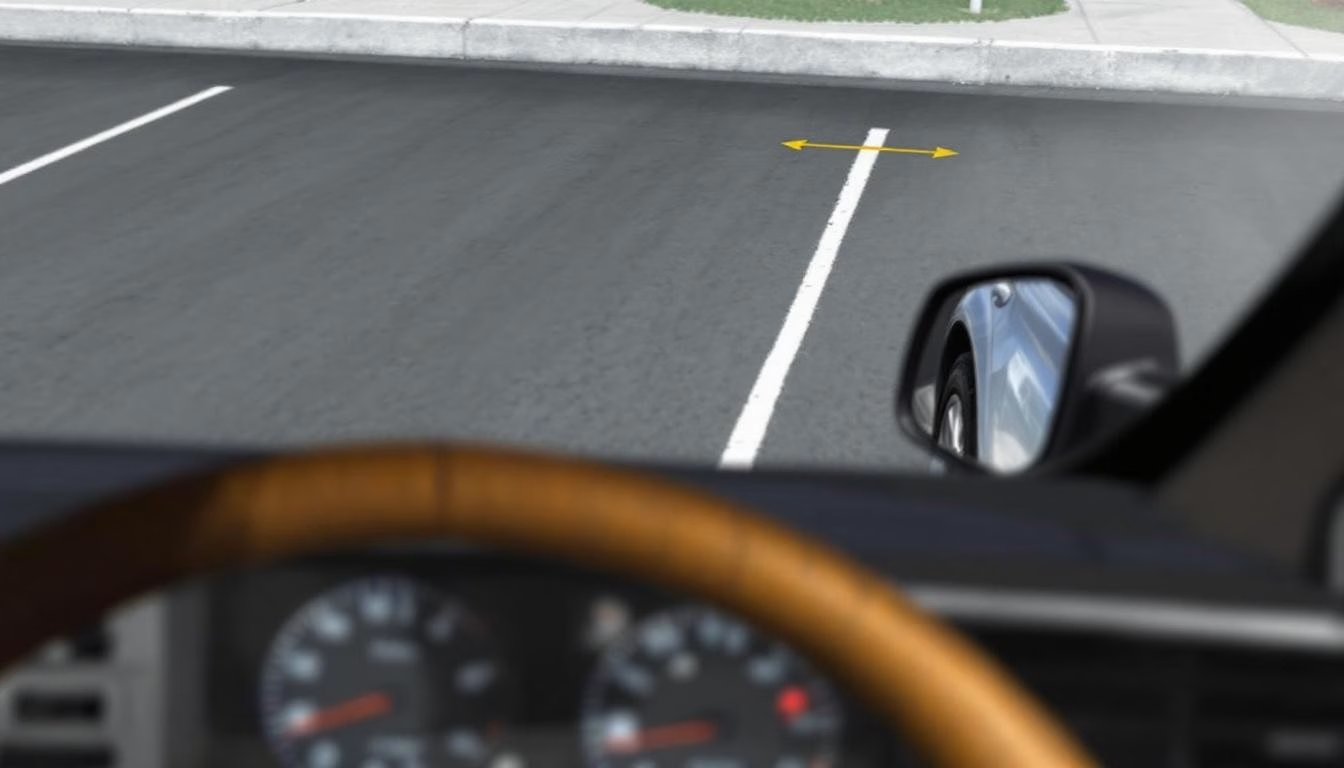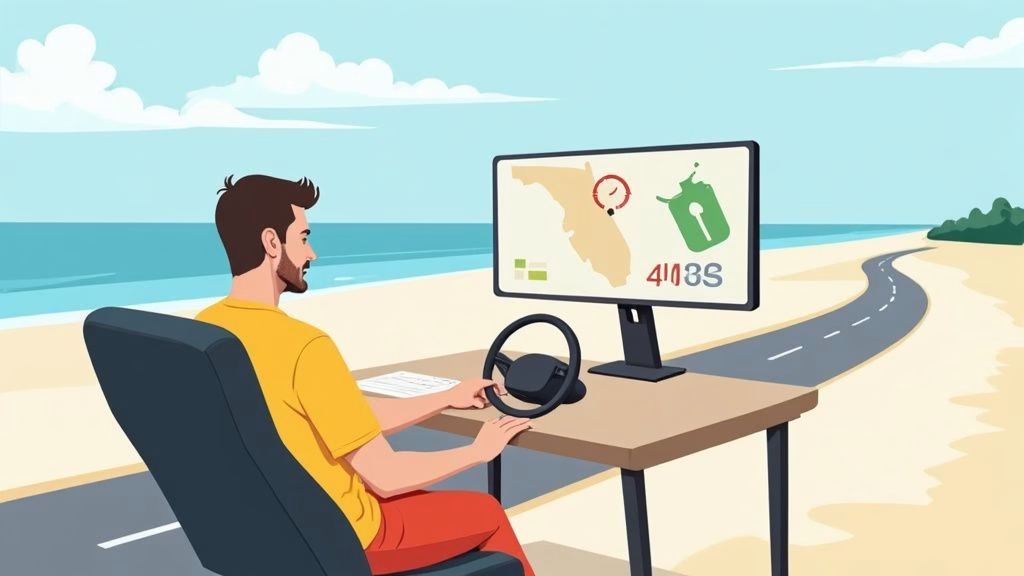Parallel parking strikes fear into the hearts of many new drivers, yet it remains one of the most tested maneuvers on driving exams. Statistics show that 23% of driving test failures involve parking-related mistakes.
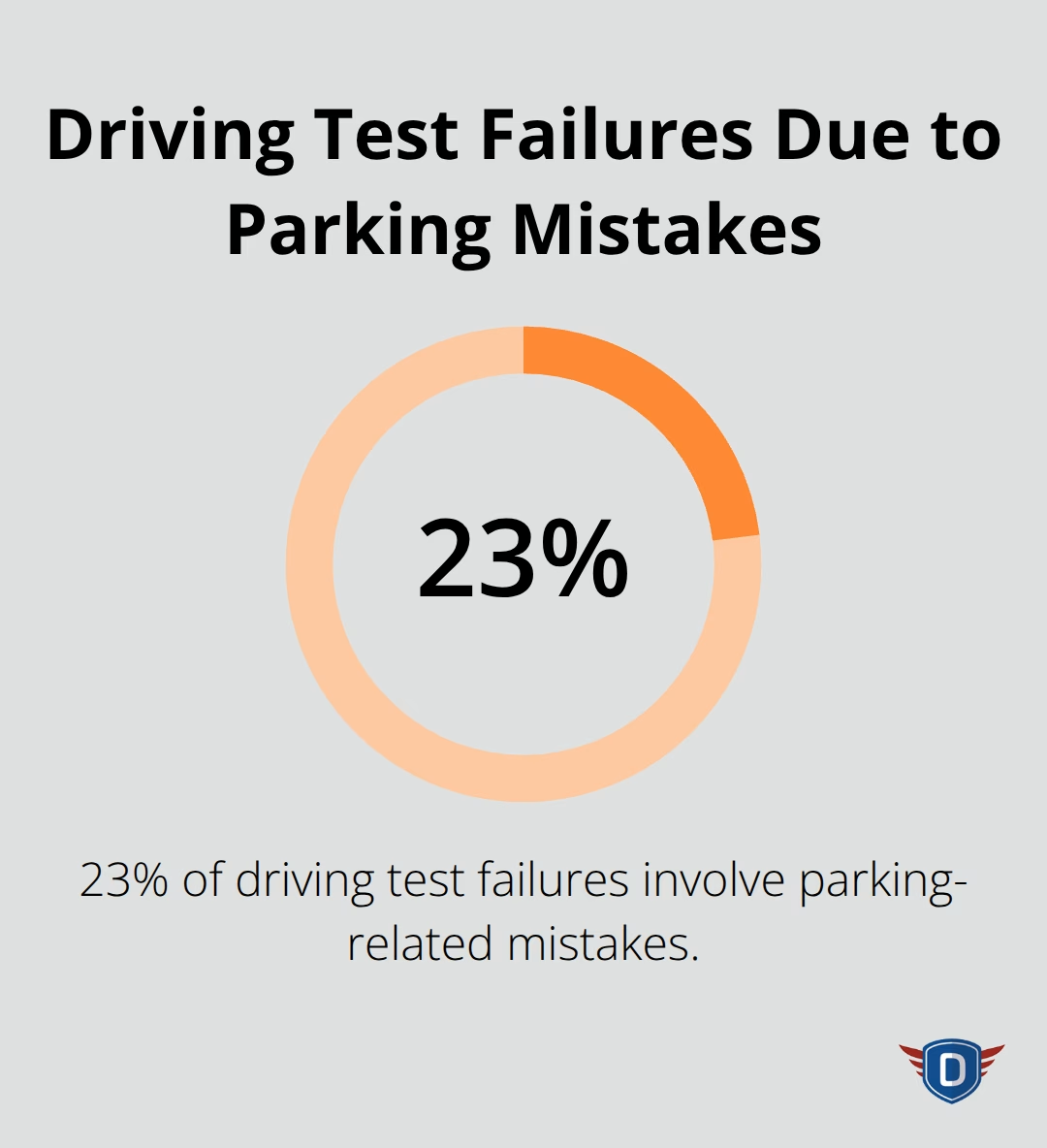
We at floridanewdriver.com know that mastering this skill requires the right parallel parking tips and consistent practice. With proper technique and preparation, you can turn this challenging maneuver into a confident display of your driving abilities.
What Do Driving Examiners Actually Look For
Driving examiners focus on three critical areas during parallel parking tests: safety awareness, vehicle control, and spatial judgment. Understanding these evaluation criteria helps you focus your practice on the exact skills that examiners assess during your test.
Safety Protocol Violations End Tests Immediately
Examiners watch for specific safety violations that result in automatic test failure. Candidates who fail to check blind spots before they reverse face immediate disqualification in most states. Those who don’t signal their intentions or block traffic flow during the maneuver also trigger instant failure. Nearly half of Americans (49%) have parallelophobia, or the fear of parallel parking, which often causes them to skip these safety checks. Examiners also penalize candidates who hit the curb, strike cones, or exceed the designated parking space boundaries by more than 18 inches.
Vehicle Control Separates Successful from Failed Candidates
Smooth control and appropriate speed management determine test success. Examiners expect candidates to maintain speeds below 5 mph throughout the entire maneuver. Jerky movements, excessive corrections, or backward rolling without reverse gear engagement result in point deductions. The most successful candidates use reference points (like side mirrors and vehicle position) to guide their movements rather than rely on guesswork. Examiners specifically look for consistent mirror use and deliberate, controlled movements that demonstrate complete control over your vehicle rather than lucky placement.
Common Point Deduction Areas
Examiners deduct points for specific technical errors during the maneuver. Candidates lose points when they position their vehicle more than 12 inches from the curb or when they fail to center the car within the space boundaries. Multiple attempts to complete the maneuver also result in point deductions, with most states allowing only two tries before automatic failure. Understanding these specific evaluation criteria helps you focus your practice on the exact skills that examiners assess during your test.
How Do You Execute Perfect Parallel Parking
Position Your Vehicle for Success
Start your parallel parking maneuver by placing your vehicle exactly 2 feet away from the parked car you want to park behind. This distance provides optimal space for the steering movements that follow. Pull alongside the front vehicle until your side mirrors align perfectly – this creates the ideal starting position that driving instructors recommend. Research shows that nearly half of Americans have parallelophobia, or the fear of parallel parking. Signal your intention to park at least 100 feet before you begin the maneuver, which gives other drivers adequate warning. Stop completely before you shift into reverse – backward rolling while still in drive triggers automatic test failure in most states.
Master the Reference Point Method
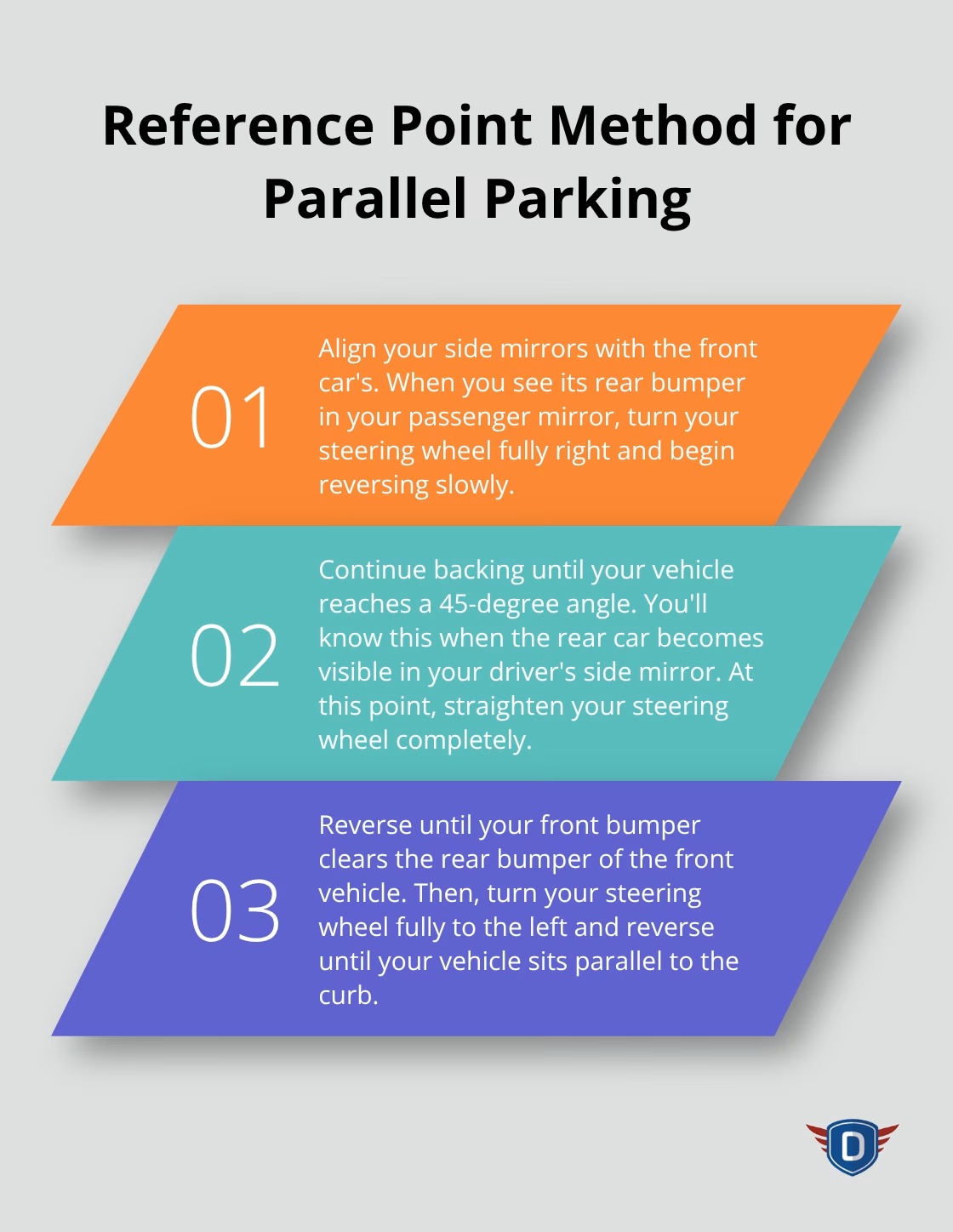
Use your passenger side mirror as your primary reference point throughout the maneuver. When you see the rear bumper of the front car in your passenger mirror, turn your steering wheel fully to the right and begin to reverse slowly. Continue to back until your vehicle reaches a 45-degree angle – you’ll know you’ve achieved this when the rear car becomes visible in your driver’s side mirror. At this point, straighten your steering wheel completely and continue to reverse until your front bumper clears the rear bumper of the front vehicle. Finally, turn your steering wheel fully to the left and reverse until your vehicle sits parallel to the curb. Drivers who follow systematic approaches to parallel parking demonstrate significantly better success rates than those who use improvised methods.
Control Your Speed Throughout the Process
Maintain speeds below 3 mph throughout the entire process – examiners fail candidates who exceed this speed limit during any portion of the maneuver. Slow movements allow you to make precise adjustments and respond to unexpected obstacles (like pedestrians or other vehicles). Test examiners specifically watch for smooth, controlled movements rather than rushed attempts that often result in mistakes. Your next challenge involves developing consistent practice routines that build muscle memory for these precise movements. Practice these skills extensively before your test to ensure success on your driving exam.
How Should You Practice Parallel Parking at Home
Create Your Home Training Setup
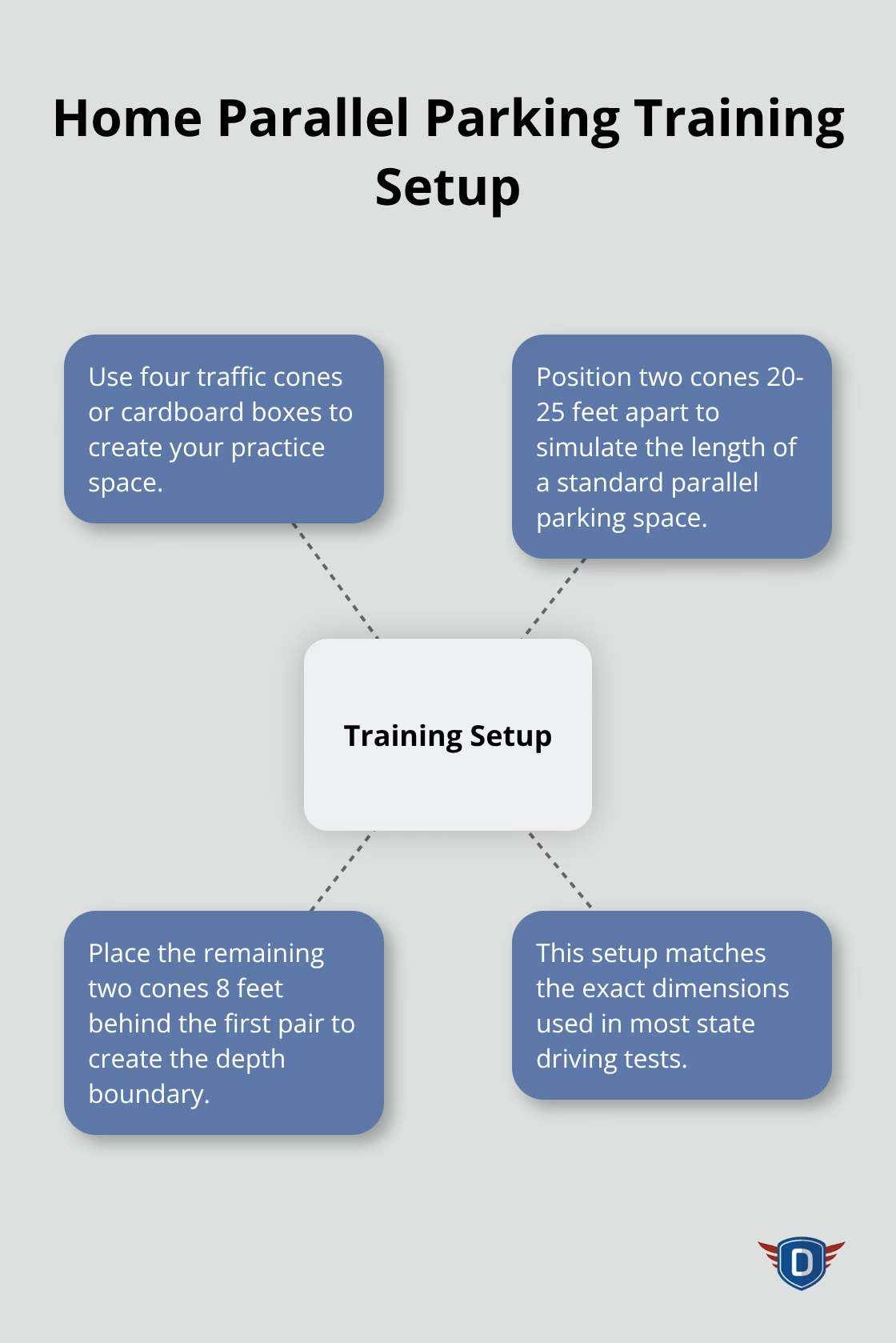
Transform an empty parking lot into your personal parallel parking training ground with four traffic cones or cardboard boxes. Position two cones 20-25 feet apart to simulate the length of a standard parallel parking space – this matches the exact dimensions used in most state driving tests. Place the remaining two cones 8 feet behind the first pair to create the depth boundary. While complex driving skills like parallel parking are a concern for drivers, those who practice with standardized dimensions show better test performance than those who practice randomly. Purchase reflective cones from auto parts stores for $15-20 total, or use large cardboard boxes weighted with rocks as cost-effective alternatives.
Execute Systematic Practice Sessions
Schedule three 30-minute practice sessions weekly rather than cram practice into single long sessions. Start each session with five successful parks in your cone setup before you attempt real-world scenarios. Track your progress with a simple score system: award yourself one point for each successful park within three attempts, and subtract points for cone hits or space boundary violations. Drivers who maintain practice logs improve their success rates compared to those who practice without records. After you master the cone setup, graduate to practice between actual parked cars during off-peak hours in shopping center lots. Poor parking skills contribute to driving test failures, but consistent practice reduces this failure rate for dedicated students.
Build Muscle Memory Through Repetition
Focus on the same reference point sequence during every practice attempt rather than experiment with different techniques. Successful parallel parkers complete multiple practice attempts before they achieve consistent results. Practice the complete maneuver from start to finish without stops – partial practice sessions create gaps in muscle memory that appear during high-pressure test situations. Video record your practice sessions with a smartphone to identify specific areas where your technique deviates from the optimal sequence. Most importantly, practice with the same vehicle you plan to use for your test (since different vehicles require slight adjustments to reference points and turn radius calculations). Specialized maneuvers like parallel parking require dedicated practice time, and the more you practice, the more comfortable you’ll feel during your exam.
Final Thoughts
Parallel parking changes from an intimidating challenge into a manageable skill when you apply the right techniques consistently. The key lies in systematic practice with reference points, speeds below 3 mph, and the same sequence every time you park. Test day success depends on three fundamental elements: safety awareness through proper blind spot checks and signals, precise vehicle control with mirror reference points, and spatial judgment that keeps you within designated boundaries.
Examiners evaluate your safety protocols first, vehicle control second, and final position third. Focus your practice on these exact areas rather than attempt to perfect every minor detail. Candidates who practice systematically with standardized cone setups show significantly better test performance than those who practice randomly (compared to improvised methods that often fail during actual tests).
We at floridanewdriver.com offer professional driver education programs with certified instructors who provide personalized guidance for challenging maneuvers like parallel parking. These parallel parking tips work best when combined with regular practice sessions that build muscle memory. Our instructors help students develop the confidence and skills needed to pass their tests and adopt safe habits for life.

